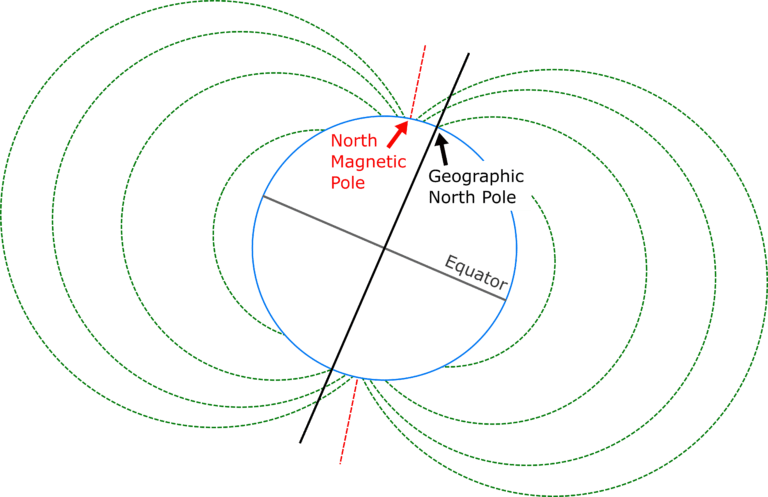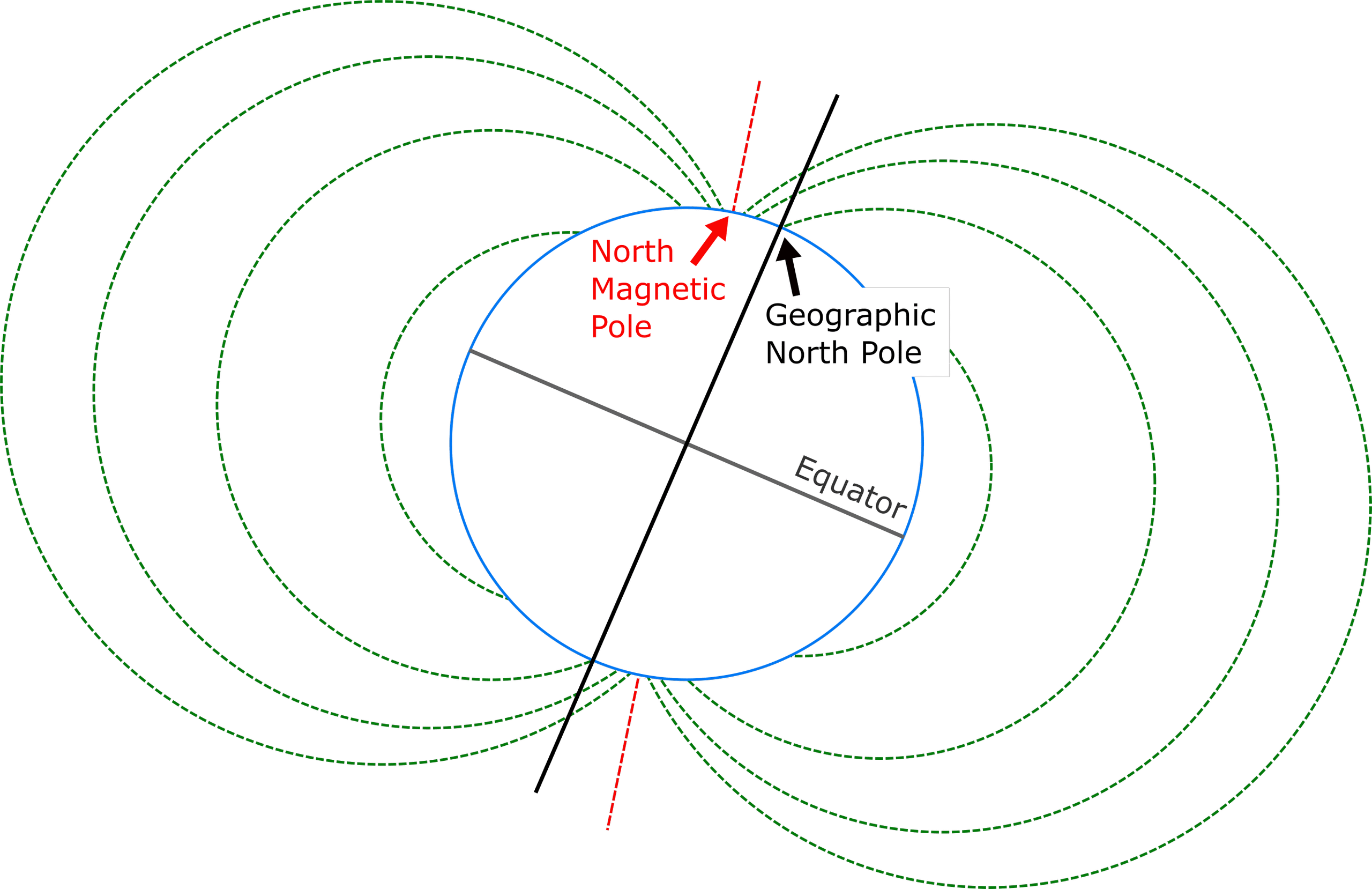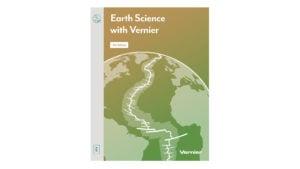
Introduction
It depends. Do you mean geographic north or magnetic north? The geographic (true) north pole is the point at 90° N latitude. It is aligned with Earth’s rotational axis. Earth is surrounded by a magnetic field with a north and south magnetic pole. The magnetic north pole is the point to which a compass needle points. It is currently in northern Canada, and is constantly moving due to complex fluid motion in the outer core of Earth. Depending on your location, the difference between magnetic north and geographic north, called magnetic declination, can range from 0° to 30°.
A compass needle aligns itself along the direction of Earth’s magnetic field. Magnetic inclination, or magnetic dip angle, is the angle that Earth’s magnetic field makes with the horizontal plane at a given location. In the Northern Hemisphere, the magnetic inclination is a downward angle from horizontal, while in the Southern Hemisphere it is an upward angle. Magnetic inclination is 0° at the magnetic equator, 90° at the north magnetic pole, and –90° at the south magnetic pole.
Earth’s magnetic field is used by many animals to determine direction. Every location on Earth has its own unique combination of magnetic field intensity, declination, and inclination. The declination and inclination together specify a direction. The Loggerhead turtle detects magnetic field intensity and direction and uses this information on its 10-year migration around the Atlantic Ocean. Many birds use both stars and the magnetic field of Earth to navigate. Migrating birds in the Northern Hemisphere follow a line of decreasing dip angle that guides them on their southerly migration path.
In Part I of this experiment, you will measure the magnetic field of Earth. You will use your data to determine magnetic north at your location. Knowing the direction of true north, you will calculate the magnetic declination at your location. In Part II, you will measure the magnetic inclination of your location.
Objectives
In this experiment, you will
- Use a magnetic field sensor to measure the magnetic field of the Earth.
- Calculate magnetic declination for your location.
- Measure the magnetic inclination of your location.
Sensors and Equipment
This experiment features the following sensors and equipment. Additional equipment may be required.
Ready to Experiment?
Ask an Expert
Get answers to your questions about how to teach this experiment with our support team.
- Call toll-free: 888-837-6437
- Chat with Us
- Email support@vernier.com
Purchase the Lab Book
This experiment is #3 of Earth Science with Vernier. The experiment in the book includes student instructions as well as instructor information for set up, helpful hints, and sample graphs and data.



